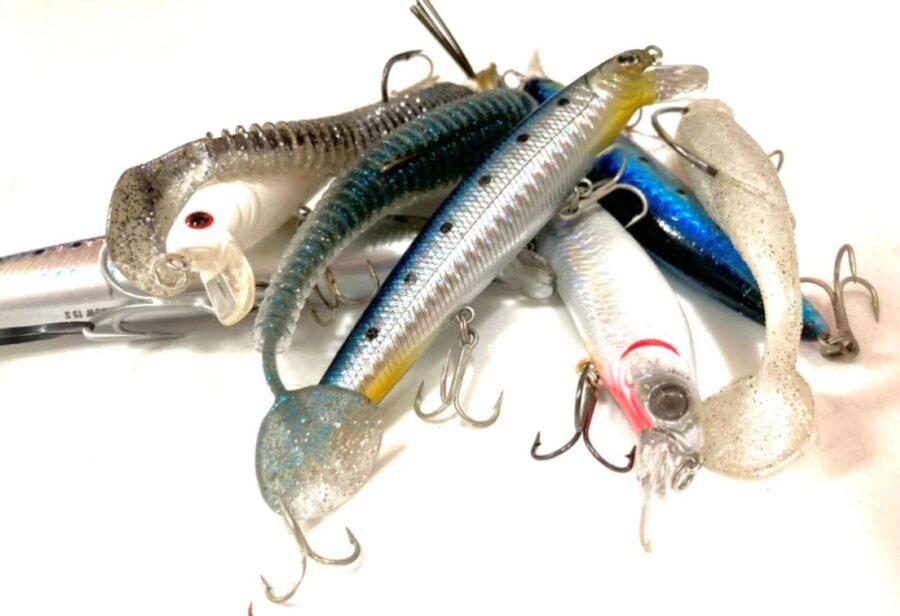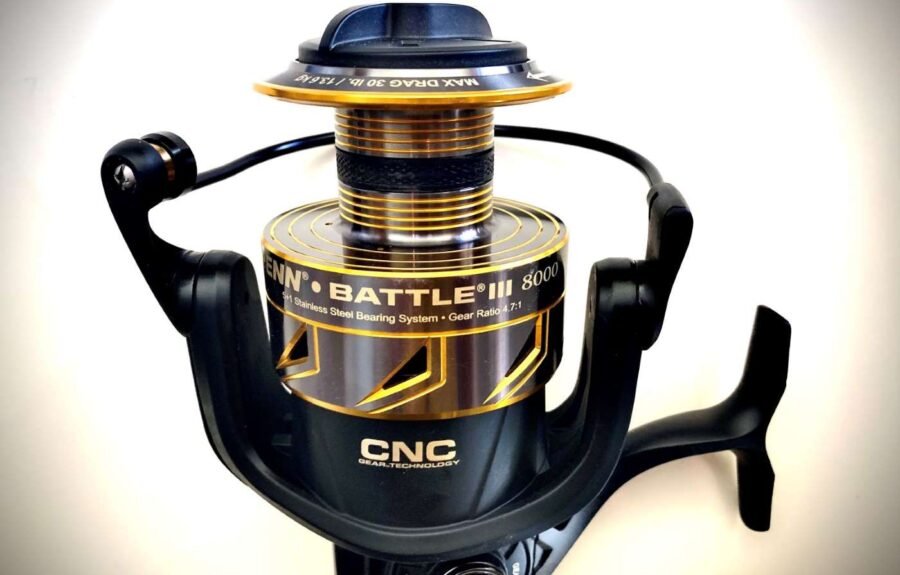5 Best Filet Knives: A Guide to Choosing the Right Knife
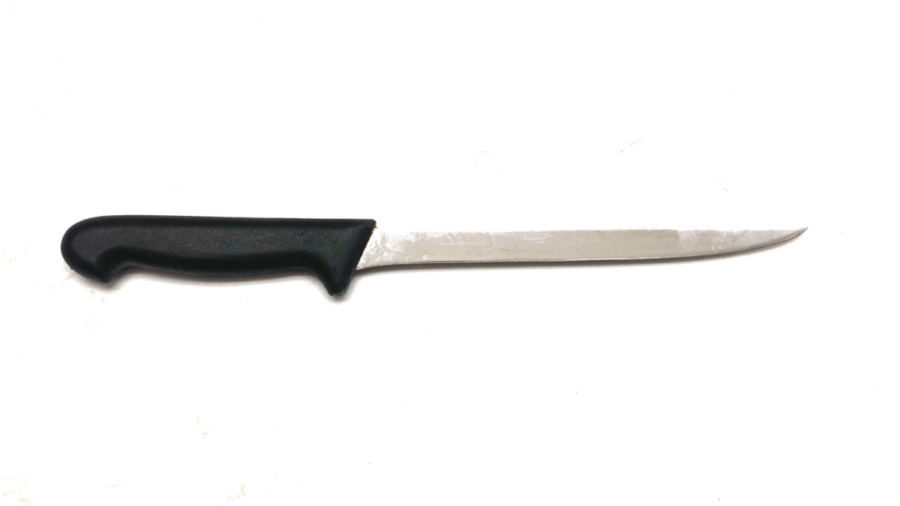
A quality filet knife is often the difference between quality fish meat and a pile of mush that once was fish. We’ve likely all been there before, where our filet knife is simply not sharp enough, not thin enough, or not flexible enough, and we embarrass ourselves in front of our dinner company due to poorly prepared fish meat. Those features listed above are just a handful of the qualities to look for when choosing the best filet knife for preparing your catch. So today, we’ll overview everything you need to know in order to select the right fish filet knife and I’ll even provide a list of the best filet knives for all your fish filleting purposes and needs.
5 Best Filet Knives
Let’s jump right into the list because that’s likely what most of you are here to check out. After this list, I’ll break down all the qualities to look for when searching for the best filet knife and we’ll talk about best length, material, flex, how to sharpen a filet knife and much more.
Victorinox Fibrox Pro Fillet Knife
Customer Reviews: 4.8 out of 5 | See reviews
Features:
| Blade Material | High carbon stainless steel |
| Handle Material | Patented Fibrox (very convenient) |
| Blade Length | 8 inches or 6 inches |
| Flexibility | 1/2″ bend from center with normal pressure |
| Warranty | Lifetime warranty against manufacturer defects |
| Sheath | Not included |
| Item Weight | 3.2 ounces |
| Recommended Wash Method | Handwash recommended |
| Item Length | 17 inches |
| Manufacturer | Victorinox |
| Country of Origin | Switzerland |
Dalstrong Fillet Knife: Gladiator Series

Customer Reviews: 4.8 out of 5 | See reviews
| Blade Material | High carbon German ThyssenKrupp steel |
| Handle Material | Luxury G10 garolite handle |
| Blade Length | 8 inches or 6 inches |
| Flexibility | 1/2″ bend from center with normal pressure |
| Warranty | Contact Manufacturer |
| Sheath | Included |
| Item Weight | 6 ounces |
| Recommended Wash Method | Handwash |
| Item Length | 12.68 inches |
| Manufacturer | Dalestrong |
| Country of Origin | China (materials imported from Germany) |
Wusthof Classic 7 Inch Fillet Knife

Customer Reviews: 4.9 out of 5 | See reviews
| Blade Material | High carbon stainless steel |
| Handle Material | High carbon stainless steel |
| Blade Length | 7.1 inches |
| Flexibility | 1/2″ bend from center with normal pressure |
| Warranty | Contact Manufacturer |
| Sheath | Not Included |
| Item Weight | 5.1 ounces |
| Recommended Wash Method | Handwash |
| Item Length | 12.4 inches |
| Manufacturer | Wusthof |
| Country of Origin | Germany |
Mercer Millennia 8.5″ Filet Knife

Customer Reviews: 4.8 out of 5 | See reviews
Features:
| Blade Material | High carbon steel |
| Handle Material | Santoprene non-slip grip |
| Blade Length | 8.5 Inches |
| Flexibility | 1/2″ bend from center with normal pressure |
| Warranty | Contact Manufacturer |
| Sheath | Not Included |
| Item Weight | 4.6 ounces |
| Recommended Wash Method | Handwash |
| Item Length | 13 inches |
| Manufacturer | Mercer Culinary |
| Country of Origin | Taiwan |
Victorinox Fillet, 7″ Straight, Flexible

Customer Reviews: 5 out of 5 | See reviews
Features:
| Blade Material | High carbon stainless steel |
| Handle Material | Patented Fibrox (very convenient) |
| Blade Length | 8 inches or 6 inches |
| Flexibility | 1/2″ bend from center with normal pressure |
| Warranty | Lifetime warranty against manufacturer defects |
| Sheath | Not Included |
| Item Weight | 3 ounces |
| Recommended Wash Method | Handwash |
| Item Length | 14 inches |
| Manufacturer | Victorinox |
| Country of Origin | Switzerland |
What Is a Filet Knife?
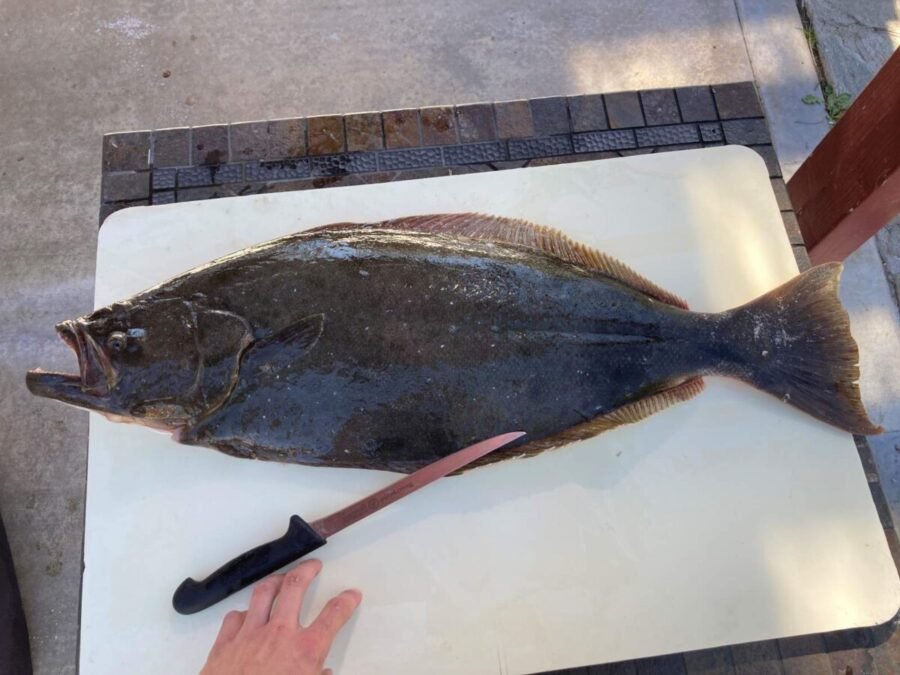
A filet knife at its most basic definition is a knife that was designed for cutting fish, resulting in what we know to be “filets” of fish meat. Typically, a filet knife has a handful of characteristics that distinguish it from other culinary knives, including their thin profile and flexible blade.
Why Are Filet Knives Flexible?
Filet fish knives are flexible so they can hug the rib cage of a fish while separating the meat from the bones. Since the spinal column will usually be the highest (protruding) point, the flex in a filet knife allows the knife to be manipulated in shape and bend around the bones to remove the most meat possible from the bones without cutting into the bones.
How Flexible Should a Filet Knife Be?
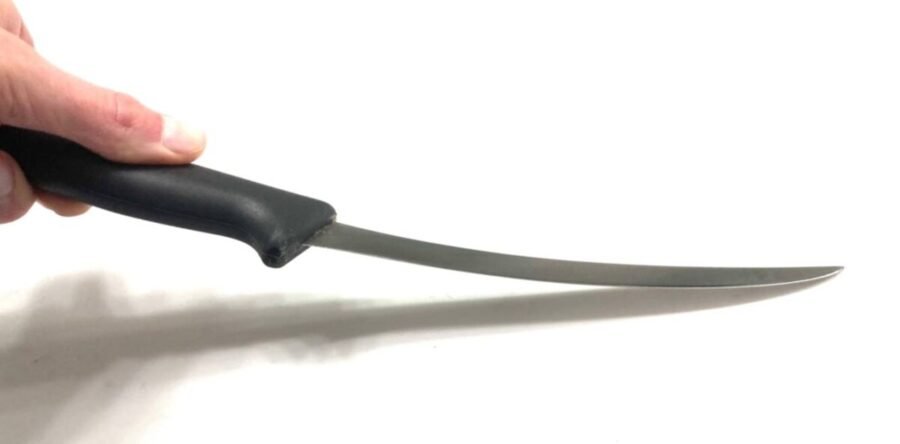
The question of how flexible a filet knife should be really depends on two things. First, the angler, chef or person who is using the knife. And second, the size of the fish.
Fileting fish is all about control. If your blade is too dull, you won’t have proper control, if the handle is too slippery, you won’t have proper control. The same is true of flex in a fish filet knife. If your blade is too stiff, you won’t be able to wrap around the fish’s bones to remove as much meat as possible. If your filet knife is too flexible, you simply won’t be able to control the blade.
When you’re shopping around for filet knives, you don’t often see a rating for flex on the knife. It typically either says “flexible” or it doesn’t.
Difference Between a Filet Knife vs Boning Knife?
A filet knife, also known as a fillet knife, is a long, flexible knife used for removing the bones from fish and other delicate meats. The blade of a filet knife is thin and narrow, making it easy to maneuver between the bones and flesh. The flexible nature of the blade also allows for easy slicing and removing of skin, making it ideal for filleting fish.
On the other hand, a boning knife is a short, stiff knife used for removing bones from meat, poultry, and fish. Unlike a filet knife, a boning knife has a thicker, stiff blade that is designed to handle tougher tasks. The blade is more rigid and allows for precise cuts around bones and joints, making it ideal for removing meat from the bones of beef, pork, or poultry. Boning knives also come in different shapes, including straight and curved blades, to accommodate various cutting tasks.
Both filet and boning knives serve important purposes in the kitchen and the choice between them often depends on the specific task at hand. While filet knives are best for removing bones from delicate fish, boning knives are ideal for removing bones from tougher meats, poultry, and fish.
Best Size Filet Knife: How Long Should a Filet Knife Be?
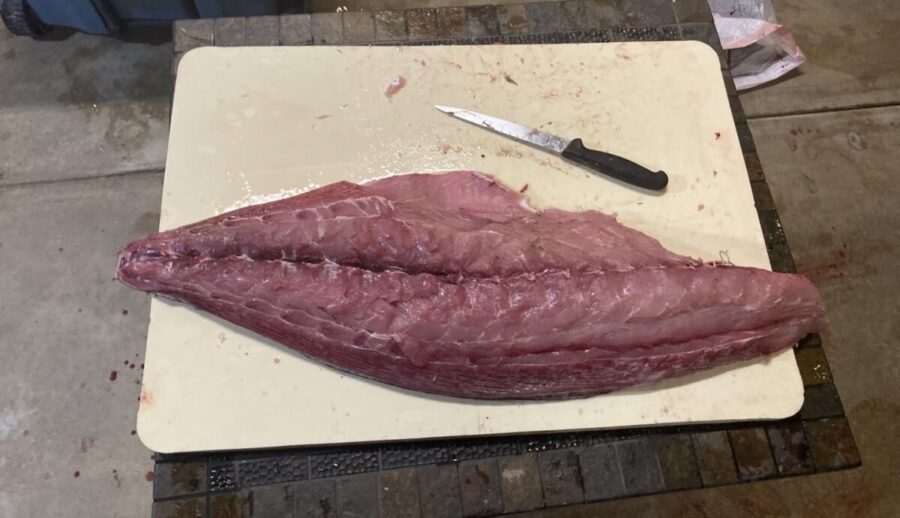
The best size filet knife depends on the size of fish you’re fileting, but generally speaking, a filet knife between 6 and 10 inches is considered the norm. The most common filet knife blade length is 7 inches.
Things To Look For in a Good Filet Knife
Handle Material of a Filet Knife
The material and construction of the handle of a filet knife is very important when it comes to choosing the right fish filet knife. Take the time to consider the following questions when making your purchase.
- Does the handle provide good grip?
- Is the handle material easy to care for?
- Consider that wooden handles may require special treatment and oils.
Type of Steel for Filet Knives
This is one of the more standard categories within the process of shopping around for the best filet knife. Most commonly, you’ll see “high carbon steel” or stainless steel”. These two steels are considered the norm. If you’re looking to learn a little bit more about types of steel in filet knives, check out this article here.
Hardness of Steel, Flexibility and Thickness
These 3 categories are directly correlated to one another. Hardness of steel combined with the thickness of the steel essentially come together to determine the flexibility of the knife blade. The harder the steel, the less flexible the knife. The softer the steel, the more flexible it is.
The thicker the blade, the less flexible the knife. The thinner the blade, the more flexible the blade. A quality filet knife takes all three factors into consideration and optimizes each category to form a balance of strength, durability, and flexibility.
Warranty
Most reputable knife manufacturers offer a warranty of sorts at least on manufacture-based flaws. If no warranty information is offered in product details, be sure to contact the product manufacturer if this is important to you.
Easiness to Clean
As mentioned above, this usually comes down to the material of the handle. Some wooden handles, although they might look very cool and intricate, may require that you regularly oil them or treat them with a similar substance.
One of the indisputable leaders in quality and ease of cleaning is Victorinox (as shown in the list of the 5 best filet knives above). Their patented Fibrox knife handle grip was designed to optimize grip, ease of cleaning, weight, and overall quality. There’s a reason their technology is patented and there’s a reason Victorinox is on this list. Ease of cleaning is a top consideration among those who filet fish on a regular basis.
Shape of Blade
The shape of a filet knife is really just a personal preference. Most anglers I know prefer the straight blade as it’s more convenient and easier to maneuver whether your a beginner or not. that’s not to say curved knives are better or worse. In fact, there’s an argument to be made that the curvature of a filet knife adds to the strength and durability of a knife as well as a cutting factor. But as mentioned, go with what you prefer… they’re both solid options.
How Do You Sharpen a Filet Knife
There are a few ways to sharpen a filet knife but like many things, it’s easier in video to explain this so check out this video right here on how to sharpen a filet knife.
Electric Filet Knives
Real men don’t use electric filet knives… C’mon man.
